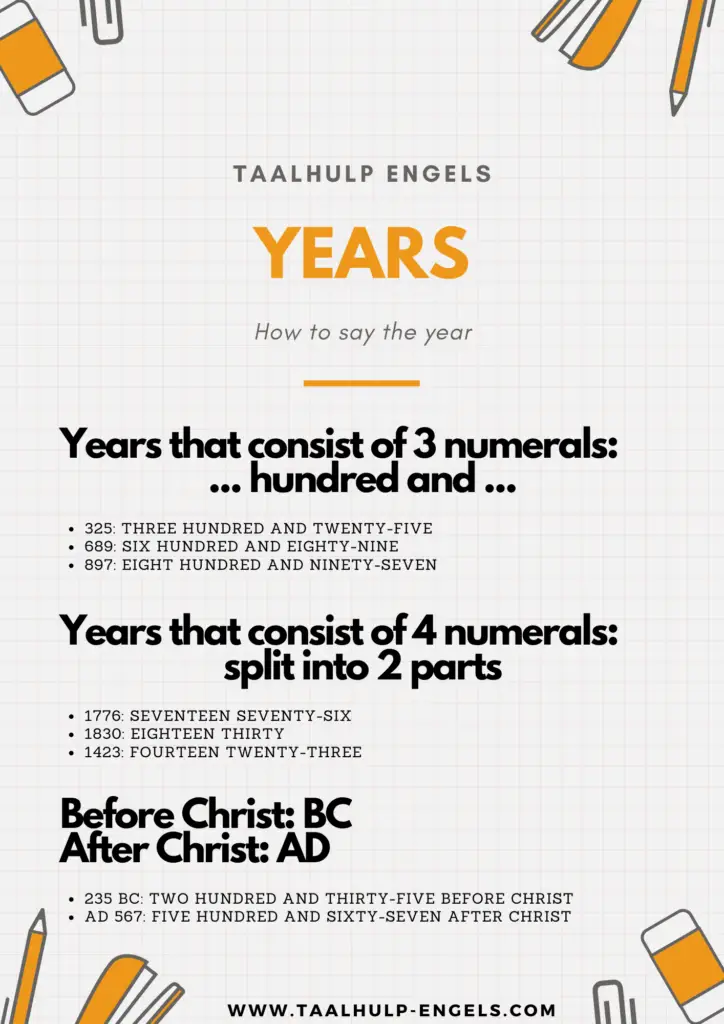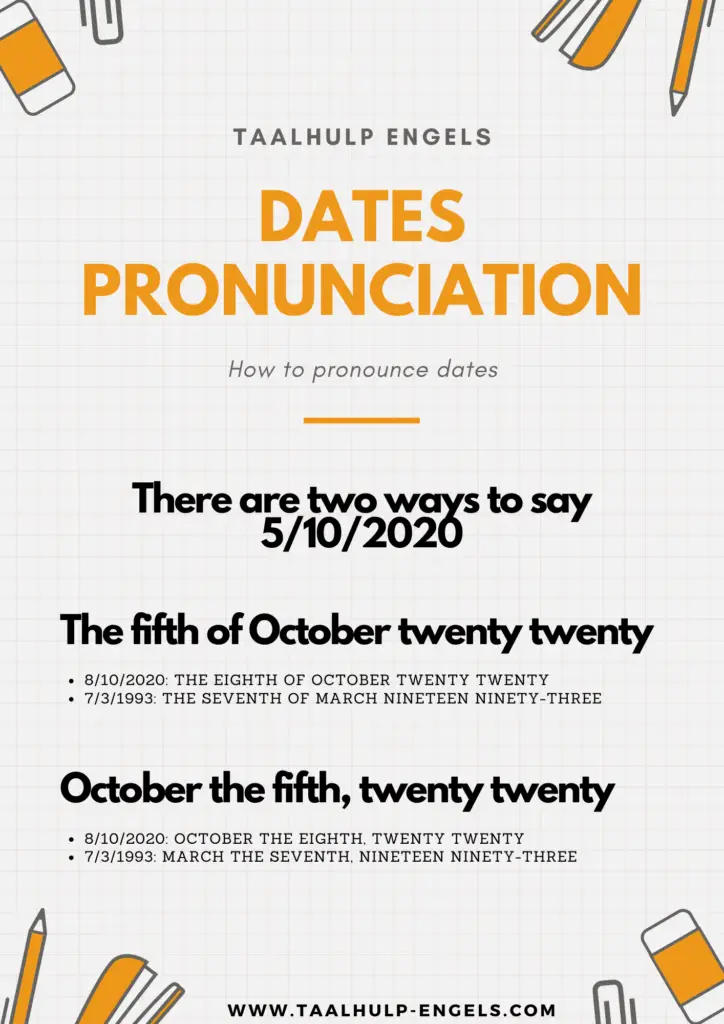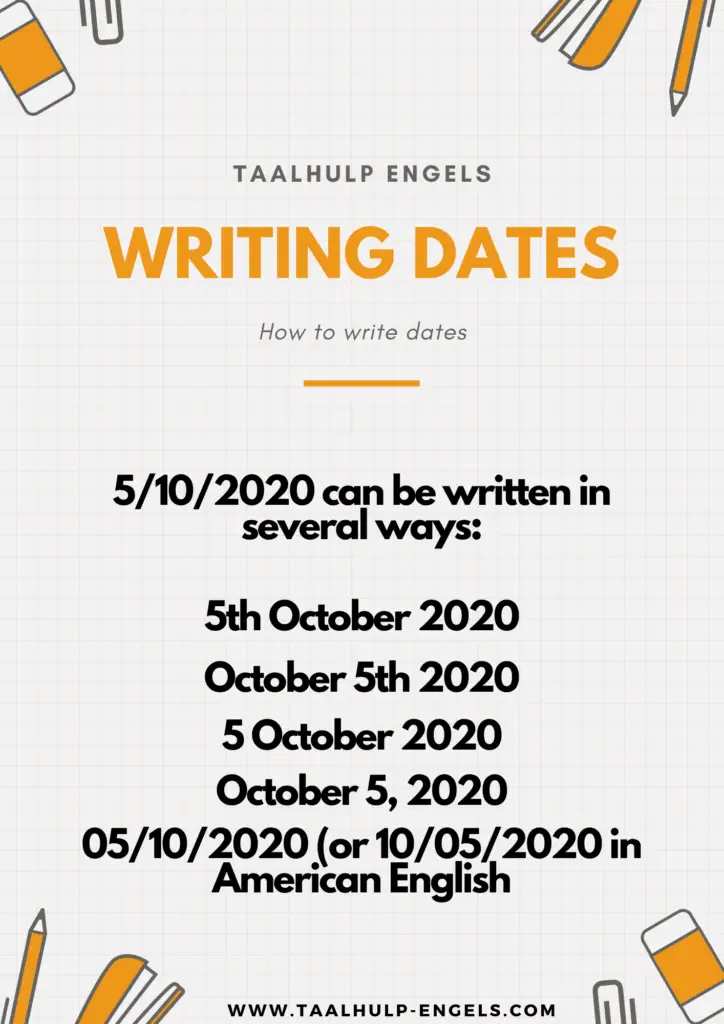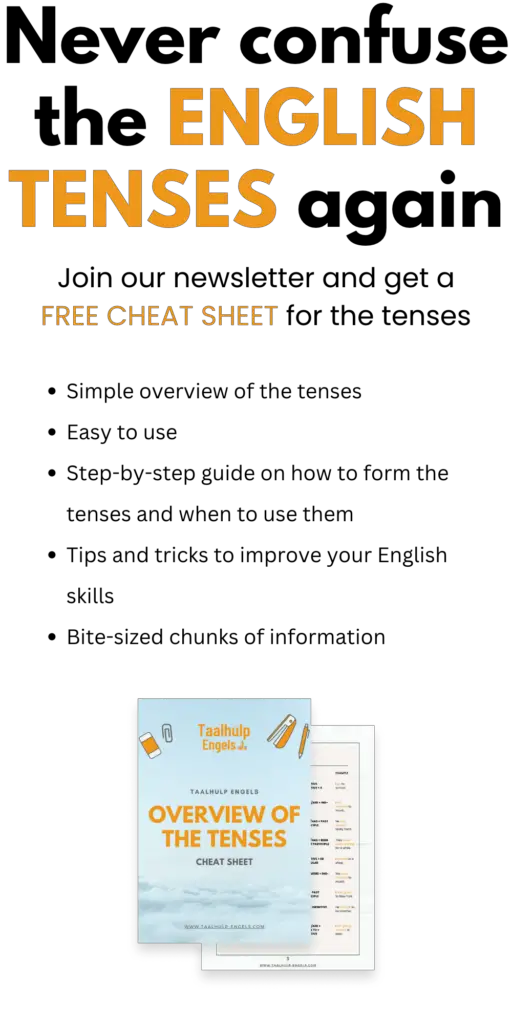Dates are a really important element of our daily lives. We make appointments, plan a city trip, go on a long holiday, … This means that everyone uses dates to talk about important events and to make plans for the future.
As is the case in other languages, English has a specific set of expressions to talk about dates and years. There are a few different ways of writing and saying them. You can find an extensive overview of the different ways below.

Pronouncing dates
When someone talks about dates, he or she can talk about years or about specific moments in a year. In English, there are clear differences between the two and these differences are explained below.
Years
Years can be read in different ways, depending on what year it is you’re talking about. There are a couple of rules and you can see some examples in the following table:
| Year | Pronunciation |
| 1800 | eighteen hundred |
| 1950 | nineteen fifty |
| 1806 | eighteen o six |
| 2000 | two thousand |
| 2015 | two thousand and fifteen / twenty fifteen |

If you have a year that consists of 3 numerals, you need to say the number of the hundreds first, followed by the number of the last two numerals. If you do this, you would say:
‘… hundred and …’.
| 325 | three hundred and twenty-five |
| 689 | six hundred and eighty-nine |
| 897 | eight hundred and ninety-seven |
| 235 | two hundred and thirty-five |
If you are dealing with a year that consists of 4 numerals, you divide it into two parts. First, you mention the number of the first two numerals, followed by the number of the last two. For example:
| 1776 | seventeen seventy-six |
| 1830 | eighteen thirty |
| 1423 | fourteen twenty-three |
| 1066 | ten sixty-six |
If you want to talk about a year before Christ, you use ‘BC’ and put it after the year. ‘BC’ literally means before Christ. For example:
| 235 BC | two hundred and thirty-five before Christ |
| 652 BC | six hundred and fifty-two before Christ |
| 60 BC | sixty before Christ |
When you want to talk about a year after Christ, you put ‘AD’ before the year, or you could just leave it as it is; without the ‘AD’. When it’s a year without ‘AD’ or ‘BC’, everyone knows you mean after Christ. ‘AD’ means ‘Anno Domini’ and translates as ‘in the year of the Lord’.
| AD 567 | five hundred and sixty-seven after Christ |
| 465 | four hundred and sixty-five |
| AD 1745 | seventeen forty-five after Christ |
Dates
If you want to talk about a specific date in a year, you can do that in two different ways. Let’s say you finally meet your best friend and you want to tell her all about your plans for an upcoming city trip to London. If you want to say that you are going to London on 5/10/2020, you can do this in two different ways:
- I’m going to London on the fifth of October twenty twenty.
- I’m going to London on October the fifth, twenty twenty.
If you want to talk about a specific date, you need to add <th> after the number of the day. Some examples:

| 8/10/2020 | the eighth of October twenty twenty October the eighth, twenty twenty |
| 7/3/1993 | the seventh of March nineteen ninety-three March the seventh, nineteen ninety-three |
| 4/2/2001 | the fourth of February two thousand and one February the fourth, two thousand and one |
| 5/12/1066 | the fifth of December ten sixty-six December the fifth, ten sixty-six |
Writing dates
Years
Years are usually written in numbers, as you can see in the examples above. It would make things a lot more complicated and more difficult to read if everyone always wrote years in words.
Dates
Things are more complicated when talking about specific dates, but nothing that can’t be done. In essence, there are five different ways in which you can write particular dates. Below, you can see how 5/10/2020 can be written in English.
| 5th October 2020 |
| October 5th 2020 |
| 5 October 2020 |
| October 5, 2020 |
| 05/10/2020 (of 10/05/2020 in American English) |





